- Home
- H. G. Wells
The War of the Worlds (Penguin Classics) Page 23
The War of the Worlds (Penguin Classics) Read online
Page 23
1.crammer’s: Institutions designed to prepare students for examinations such as University entrance.
2.St James’s Gazette: A Conservative paper (published 1880–1905) with a leaning towards literary interests.
3.theatre trains: Trains timed to return London theatre-goers to their homes in the suburbs.
4.Sunday Sun: London’s first popular halfpenny evening newspaper, it was established 1891, and relaunched with a new series from 1893–1908.
5.‘hand-book’ article in the Referee: London weekly paper, published 1877–1928, with an emphasis on sport, humour and the arts.
6.Foundling Hospital: A home for illegitimate children in Bloomsbury, founded in 1739 by Thomas Coram (1688–1751).
7.‘lungs’: Areas of open parkland.
8.omnibuses: At this time, like ‘cabs’, horse-drawn.
9.Epsom High Street on a Derby Day: The Epsom Derby, held in June, is the most important event in the horse-racing calendar. In other words, swarming with people.
CHAPTER 15
WHAT HAD HAPPENED IN SURREY
1.St George’s Hill: About five miles north-east of Woking station. In 1649, it was the site of the Digger settlement led by Gerrard Winstanley (1609–76).
2.evening star: Venus.
3.greater Moscow: The Russians frustrated Napoleon’s invasion in 1812 by setting fire to Moscow, forcing the French to make a humiliating retreat.
4.kopjes: Small flat-topped hills, as in South Africa (Afrikaans).
5.carbonic acid gas: Carbon dioxide.
6.four lines in the blue of the spectrum: See the contradiction in the Epilogue.
CHAPTER 16
THE EXODUS FROM LONDON
1.pony-chaise: Light carriage.
2.thirty pounds in gold: In coin: gold sovereigns worth one pound sterling.
3.East End: London’s poor working-class district. The driver of the cart is speaking with a strong East London accent.
4.‘Vestry’: A committee ‘vested’ to provide services.
5.‘Lord Garrick . . . the Chief Justice?’: The Lord Chief Justice is the second-highest Judge of the Courts of England and Wales (after the Lord Chancellor) and presides over the Criminal Division of the Court of Appeal. The Lord Chief Justice during the period The War of the Worlds was written and published was Lord Russell of Killowen (1832–1900).
CHAPTER 17
THE ‘THUNDER CHILD’
1.home counties: The counties neighbouring London: Middlesex, Essex, Kent and Surrey (sometimes also Sussex and Hertfordshire).
2.Goths and Huns: The Goths, a Germanic tribe, ravaged Europe during the third to fifth centuries AD. The Asiatic Huns, led by the feared Attila, invaded Europe in the fifth century.
3.Pool of London: The dockland area of the River Thames reaching upstream to London Bridge: the heart of London’s maritime trading.
4.lightermen: The operators of ‘lighters’ or barges that unload ships of their cargo.
5.Committee of Public Supply: An echo of the ‘Committee of Public Safety’ of the French Revolution.
6.Waltham Abbey Powder Mills: Waltham Abbey in Essex is sixteen miles north of London. The ‘powder-mills’ had produced gunpowder since the seventeenth century.
7.electric boats: William Woodnut Griscom invented an electric motor suitable for marine application in 1879, and by the 1890s electric boats were used for pleasure boats and light naval craft.
8.rained down darkness upon the land: Genesis 19:24, ‘The Lord rained upon Sodom and upon Gomorrah brimstone and fire’; Exodus 10:22, ‘and there was a thick darkness in all the land of Egypt’. See also Matthew 27:45.
BOOK II
CHAPTER 1
UNDER FOOT
1.destruction of Pompeii: The Roman city of Pompeii, near Naples, was overwhelmed by hot ash and lava on the eruption of Vesuvius in 79 BC.
2.semi-detached villa: Small suburban houses (two houses sharing a common wall). More socially desirable than rows of joined ‘terraced’ housing.
3.coloured supplements: Coloured reproductions of works of art given away with newspapers and used for decoration in poorer households.
CHAPTER 2
WHAT WE SAW FROM THE RUINED HOUSE
1.one of the first pamphlets: Wells was not impressed by the illustrations, by Warwick Goble (1862–1943), for the original magazine serialization of The War of the Worlds in Pearson’s Magazine.
2.Professor Howes: George Bond Howes (1853–1905), was assistant to T. H. Huxley at the time of Wells’s education under him and wrote the introduction to Wells’s Text-Book of Biology (1893).
3.fresh-water polyp: ‘Polyp’ is a general term for small tentacled animals, but Wells is probably referring to the Hydra (Hydrozoa).
4.Tunicates: A group of small marine animals (Urochordata) including sea-squirts and kinds of plankton, a sub-group of the phylum Chordata (Vertebrates or backboned animals). The free-swimming young have nerve cords along their backs which are lost in adulthood, so they are seen as transitional between invertebrates and vertebrates.
5.a certain speculative writer: Obviously named H. G. Wells, whose ‘The Man of the Year Million’ appeared in the Pall Mall Gazette (9 November 1893) and on 16 November 1893 in the Pall Mall Budget, a weekly which reprinted items from the Gazette. It was parodied in Punch (25 November 1893). Wells’s description of the Martians in War of the Worlds is similar to his picture of evolved Humanity in this article.
6.‘teacher and agent of the brain’: In ‘The Man of the Year Million’ the ‘Professor’ refers to the hand as ‘the teacher and interpreter of the brain’.
7.Red Weed: In ‘The Crystal Egg’ (1897) Wells describes the expanses of water on Mars lined with ‘dense red weeds’ (his emphasis). Percy Gregg’s novel Across the Zodiac (1880) speculated that Martian vegetation was orange. The French astronomer Camille Flammarion (see note 8 to Book I, Ch. 1) argued that the dominant colour of Martian vegetation could be red, thus explaining the planet’s colour. His L’Astronomie populaire was translated into English in 1894 and was read by Wells.
8.Philips: Philips appears to be one of Wells’s fictional ‘authorities’.
9.hastily compiled pamphlet: In context, another joke reference to the original serialization of War of the Worlds, but David Y. Hughes and Harry M. Geduld, in their critical edition of the novel, point out that the serial does not refer to Martian communication in this way.
10.telepathic theory: The term ‘telepathy’ for thought transference was coined in 1882 by Fredric W. H. Myers (1843–1901) of the Society for Psychical Research. Wells had published a hostile review of a book on thought transference in Nature (6 December 1894).
11.road-skates: Roller-skating was popular until overtaken by the bicycle craze in the 1890s, but Wells may be using the word ‘skate’ in a more general sense: ‘a device with a set of rollers or wheels on which something moves’ (OED).
12.Lilienthal: The German inventor Otto Lilienthal (1848–96) constructed and tested gliders until his death following a crash.
13.sticks: Shooting-sticks, i.e. pistols.
14.the wheel is absent: The Martians do, however, use ‘discs’ and curved bearings. The civilizations of South America had no knowledge of the wheel as a tool. Unlike the Martians, they succumbed to invasion. Some writers have since speculated about wheels found as part of natural biology: examples are in Philip Pullman’s Amber Spyglass (2001) and James White’s ‘Vertigo’ (1968).
15.friction bearings: Parts placed between moving parts of a machine to reduce friction. Wells describes them as ‘curved’ but they may not be what we call ‘ball-bearings’.
CHAPTER 4
THE DEATH OF THE CURATE
1.‘The wine-press of God’: Revelation 14:19, ‘the great winepress of the wrath of god’.
2.‘Woe unto this unfaithful city!’: An echo of numerous Biblical lamentations, for example Revelation 18:10: ‘Alas, alas, that great city, Babylon’; Revelation 8:13: ‘Woe, woe, woe to the i
nhabiters of the earth’; Isaiah 1:21: ‘How is the faithful city become an harlot!’
3.split-ring: Ring on which keys are attached.
4.Briareus: In Greek mythology, a giant with a hundred hands.
CHAPTER 6
THE WORK OF FIFTEEN DAYS
1.Putney: A district of London south of the Thames and about seven miles west of the city centre. In October/November 1647 Putney Church was the site of the ‘Putney debates’ between the New Model Army and the Levellers, chaired by Oliver Cromwell.
2.cankering: Festering, corrupting; with an implication of ‘cancerous’.
CHAPTER 7
THE MAN ON PUTNEY HILL
1.‘They’ve lost one – just one’: That witnessed in Book I, Ch. 12. In fact, the Martians have lost at least two tripods: the narrator’s brother witnessed the destruction of a second in Book I, Ch. 17, but neither the artilleryman nor the narrator know this.
2.‘eating peas with a knife’: A sign of lower-class origins, as is dropping the ‘h’.
3.‘funk and precautions’: Cowardice.
4.‘mashers’: Fashionable young men, dandies, often seducers of young women.
5.‘poetry swipes’: ‘Swipes’ is watery beer, and the implication is that poetry is ‘wet’ as in effete or useless.
6.mock-turtle soup: Soup (usually from a calf’s head) made in imitation of turtle soup.
7.old palace: Lambeth Palace, the official residence of the Archbishop of Canterbury.
8.arbor vitae: Evergreen shrubs.
9.Circus: Piccadilly Circus, the centre of London’s theatre-going area, and a location of vice and revelry.
10.the Langham: The Langham Hotel, mentioned again in the next chapter.
11.‘Thames-side burgundy’: Although wine was produced in the south-east of England on an experimental basis during the nineteenth century, the narrator may be referring to weak imported wine from London wholesalers.
12.euchre: A game of cards for two to four players in which the object is, as in whist and many other card games, to take ‘tricks’.
13.parish points: They played for the parishes of London as stakes, rather than for money.
CHAPTER 8
DEAD LONDON
1.a Sunday in the City: The City of London is a business district with few residents. On Sundays it would be (and still is) quiet.
2.mechanical Samson: Samson, the hero of the Israelites whose story is told in Judges 13–16, tore down the temple of the Philistines with his bare hands.
3.destruction of Sennacherib: The destruction by the Angel of the Lord of the army led by Sennacherib, King of the Assyrians, as told in II Kings 35–7, and the subject of Byron’s poem ‘The Destruction of Sennacherib’.
4.Albert Hall: In South Kensington, part of a range of museums and cultural institutions planned by Queen Victoria’s consort Prince Albert (1819–61) after the Great Exhibition of 1851. It opened in 1871 and remains one of London’s major concert halls.
5.Crystal Palace: Constructed in Hyde Park for the Great Exhibition of 1851 and reopened at Sydenham Hill in South London in 1854. It was destroyed by fire in 1936.
CHAPTER 9
WRECKAGE
1.‘The Last Man Left Alive!’: A line from the poem by Thomas Hood, (1799–1845) ‘The Last Man’ (1824): ‘and there I stood,/ The LAST MAN left alive/To have my own will of all the earth’.
2.Daily Mail: Founded 1896 by Alfred Harmsworth, Lord Northcliffe (1865–1922) and still published today. Its cheap price and popular approach soon gave it a circulation of over half a million.
3.advertisement stereo: Newspaper advertising often took the form of repetitions of a single slogan. (In printing, ‘stereotype’ is a block or set of fixed type for reproducing impressions.)
CHAPTER 10
THE EPILOGUE
1.luminous and sinuous marking: Possibly the invading Martians on Venus are signalling home. If so, as well as the wheel they have not discovered radio.
A.S.
News, reviews and previews of forthcoming books
read about your favourite authors
•
investigate over 12,000 titles
•
browse our online magazine
•
enter one of our literary quizzes
•
win some fantastic prizes in our competitions
•
e-mail us with your comments and book reviews
•
instantly order any Penguin book
‘To be recommended without reservation . . . a rich and
rewarding online experience’ Internet Magazine
www.penguin.com
• Details about every Penguin Classic
• Advanced information about forthcoming titles
• Hundreds of author biographies
• FREE resources including critical essays on the books and their historical background, reader’s and teacher’s guides.
• Links to other web resources for the Classics
• Discussion area
• Online review copy ordering for academics
• Competitions with prizes, and challenging Classics trivia quizzes
PENGUIN CLASSICS ONLINE
READ MORE IN PENGUIN
In every corner of the world, on every subject under the sun. Penguin represents quality and variety – the very best in publishing today.
For complete information about books available from Penguin – including Puffins, Penguin Classics and Arkana – and how to order them, write to us at the appropriate address below. Please note that for copyright reasons the selection of books varies from country to country.
In the United Kingdom: Please write to Dept. EP, Penguin Books Ltd, Bath Road. Harmondsworth, West Drayton, Middlesex UB7 0DA
In the United States: Please write to Consumer Services, Penguin Putnam Inc., 405 Murray Hill Parkway. East Rutherford. New Jersey 07073-2136. VISA and MasterCard holders call 1-800-631-8571 to order Penguin titles
In Canada: Please write to Penguin Books Canada Ltd, 10 Alcorn Avenue, Suite 300. Toronto. Ontario M4V 3B2
In Australia: Please write to Penguin Books Australia Ltd, 487 Maroondah Highway, Ringwood, Victoria 3134
In New Zealand: Please write to Penguin Books (NZ) Ltd, Private Bag 102902. North Shore Mail Centre, Auckland 10
In India: Please write to Penguin Books India Pvt Ltd, 11 Community Centre, Panchsheel Park, New Delhi 110017
In the Netherlands: Please write to Penguin Books Netherlands bv, Postbus 3507, NL-1001 AH Amsterdam
In Germany: Please write to Penguin Books Deutschland GmbH. Metzlerstrasse 26. 60594 Frankfurt am Main
In Spain: Please write to Penguin Books S. A.. Bravo Murillo 19. 1°B. 28015 Madrid
In Italy: Please write to Penguin Italia s.r.l. Via Vittorio Emanuele 45/a. 20094 Corsico. Milano
In France: Please write to Penguin France, 12, Rue Prosper Ferradou, 31700 Blagnac
In Japan: Please write to Penguin Books Japan Ltd, Iidabashi KM-Bldg, 2-23-9 Koraku. Bunkyo-Ku, Tokyo 112-0004
In South Africa: Please write to Penguin Books South Africa (Pty) Ltd, P.O. Box 751093. Gardenview. 2047 Johannesburg
PENGUIN CLASSICS
THE TIME MACHINE H.G. WELLS
‘I had made myself the most complicated and the most hopeless trap that ever a man devised’
When a Victorian scientist propels himself into the year 802,701 AD, he is initially delighted to find that suffering has been replaced by beauty, contentment and peace. Entranced at first by the Eloi, an elfin species descended from man, he soon realizes that this beautiful people are simply remnants of a once-great culture – now weak and childishly afraid of the dark. They have every reason to be afraid: in deep tunnels beneath their paradise lurks another race descended from humanity – the sinister Morlocks. And when the scientist’s time machine vanishes, it becomes clear he must search these tunnels, if he is ever to return to his own era.
&nbs
p; The Time Machine is the first and greatest modern portrayal of time-travel. Part of a brand-new Penguin series of H. G. Wells’s works, this edition includes a newly established text, a full biographical essay on Wells, a further reading list and detailed notes. Marina Warner’s introduction considers Wells’s development of the ‘scientific romance’ and places the novel in the context of its times.
Introduced by Marina Warner
Textual Editing by Patrick Parrinder
Notes by Steven McLean
www.penguin.com
PENGUIN CLASSICS
THE FIRST MEN IN THE MOON H.G. WELLS
‘I fell and fell and fell for evermore into the abyss of the sky’
When penniless businessman Mr Bedford retreats to the Kent coast to write a play, he meets by chance the brilliant Dr Cavor, an absent-minded scientist on the brink of developing a material that blocks gravity. Cavor soon succeeds in his experiments, only to tell a stunned Bedford the invention makes possible one of the oldest dreams of humanity: a journey to the moon. With Bedford motivated by money, and Cavor by the desire for knowledge, the two embark on the expedition. But neither are prepared for what they find – a world of freezing nights, boiling days and sinister alien life, on which they may be trapped forever.
The First Men in the Moon is one of the first and greatest science fiction novels. Part of a brand-new Penguin series of H. G. Wells’s works, this edition includes a newly established text, a full biographical essay on Wells, a further reading list and detailed notes. China Mieville’s introduction places the novel in literary context, and reveals it as a skilled critique of Imperialism.
Introduced by China Mieville
Textual Editing by Patrick Parrinder
Notes by Steven McLean
www.penguin.com

 Ann Veronica: A Modern Love Story
Ann Veronica: A Modern Love Story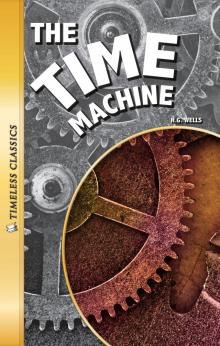 The Time Machine
The Time Machine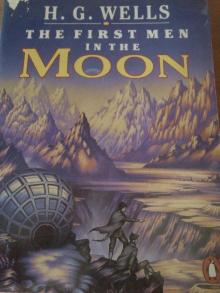 The First Men in the Moon
The First Men in the Moon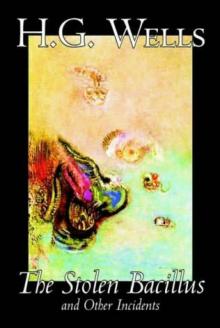 The Stolen Bacillus and Other Incidents
The Stolen Bacillus and Other Incidents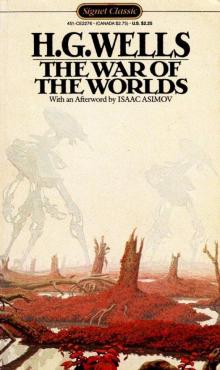 The War of the Worlds
The War of the Worlds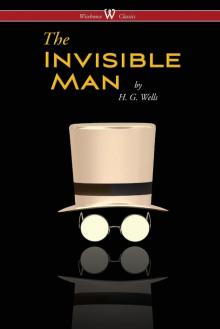 The Invisible Man: A Grotesque Romance
The Invisible Man: A Grotesque Romance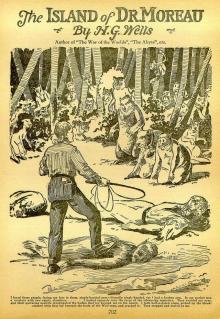 The Island of Doctor Moreau
The Island of Doctor Moreau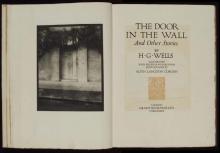 The Door in the Wall, and Other Stories
The Door in the Wall, and Other Stories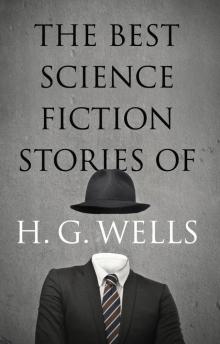 The Best Science Fiction Stories of H G Wells
The Best Science Fiction Stories of H G Wells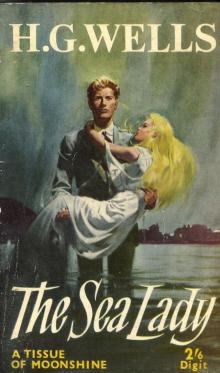 The Sea Lady
The Sea Lady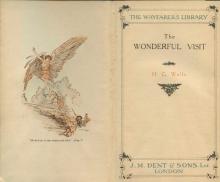 The Wonderful Visit
The Wonderful Visit Love and Mr. Lewisham
Love and Mr. Lewisham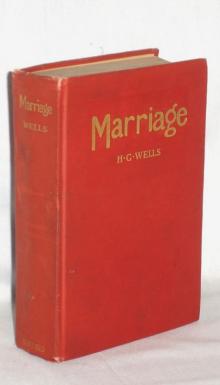 Marriage
Marriage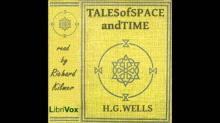 Tales of Space and Time
Tales of Space and Time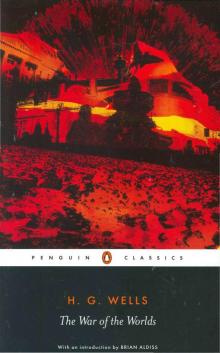 The War of the Worlds (Penguin Classics)
The War of the Worlds (Penguin Classics) Twelve Stories and a Dream
Twelve Stories and a Dream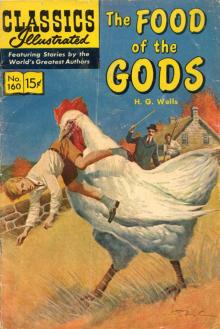 The Food of the Gods and How It Came to Earth
The Food of the Gods and How It Came to Earth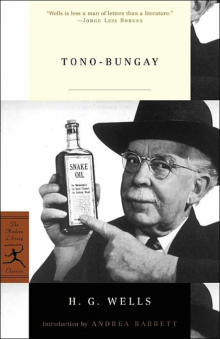 Tono-Bungay
Tono-Bungay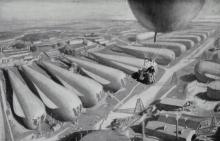 The War in the Air
The War in the Air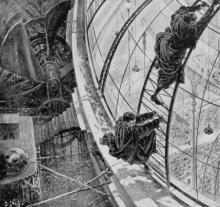 The Sleeper Awakes
The Sleeper Awakes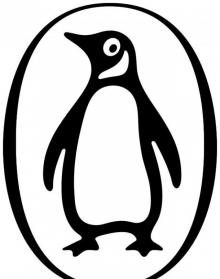 The Country of the Blind and Other Stories
The Country of the Blind and Other Stories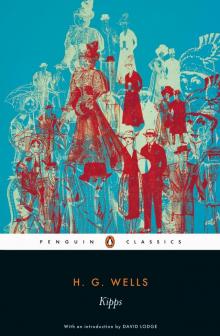 Kipps
Kipps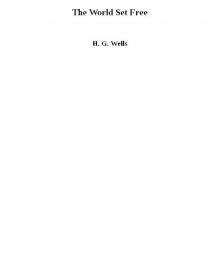 The World Set Free
The World Set Free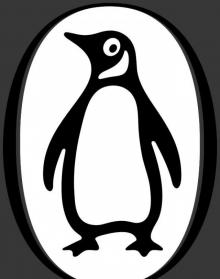 The Country of the Blind and other Selected Stories
The Country of the Blind and other Selected Stories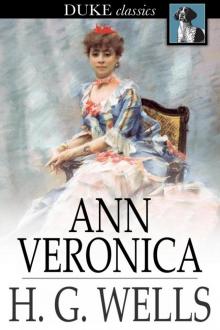 Ann Veronica
Ann Veronica Ann Veronica a Modern Love Story
Ann Veronica a Modern Love Story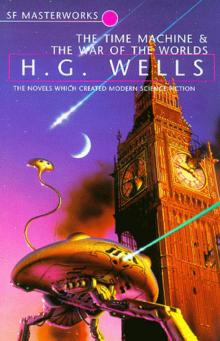 The Time Machine and The War of the Worlds
The Time Machine and The War of the Worlds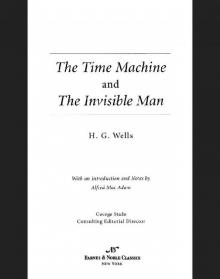 Time Machine and The Invisible Man (Barnes & Noble Classics Series)
Time Machine and The Invisible Man (Barnes & Noble Classics Series)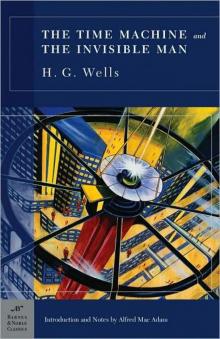 The Time Machine and The Invisible Man
The Time Machine and The Invisible Man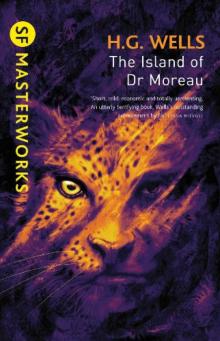 The Island of Dr. Moreau
The Island of Dr. Moreau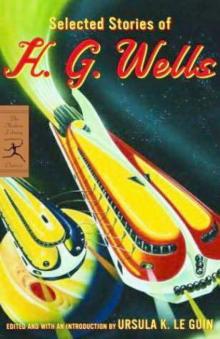 Selected Stories of H. G. Wells
Selected Stories of H. G. Wells Island of Dr. Moreau
Island of Dr. Moreau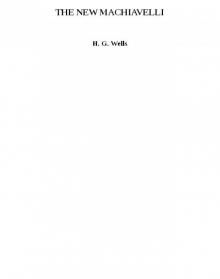 THE NEW MACHIAVELLI
THE NEW MACHIAVELLI